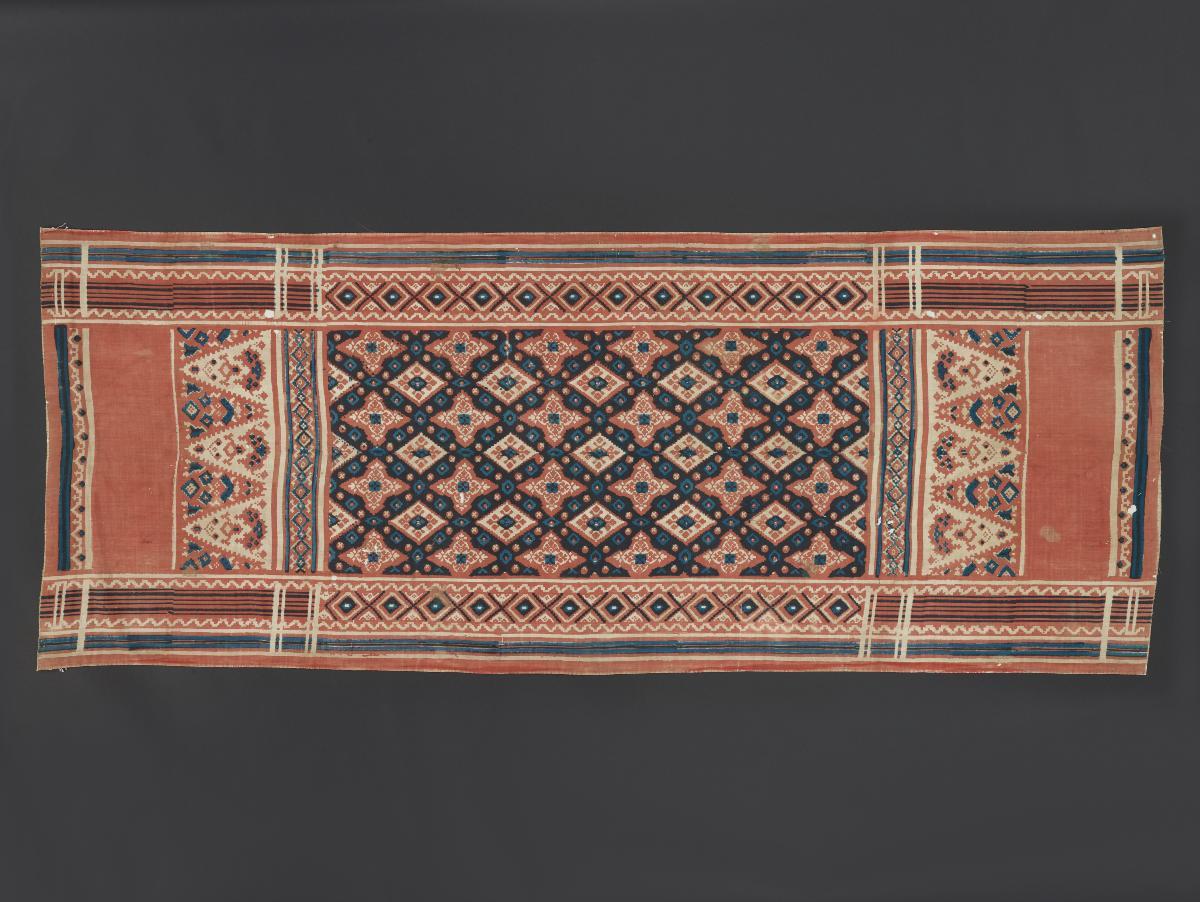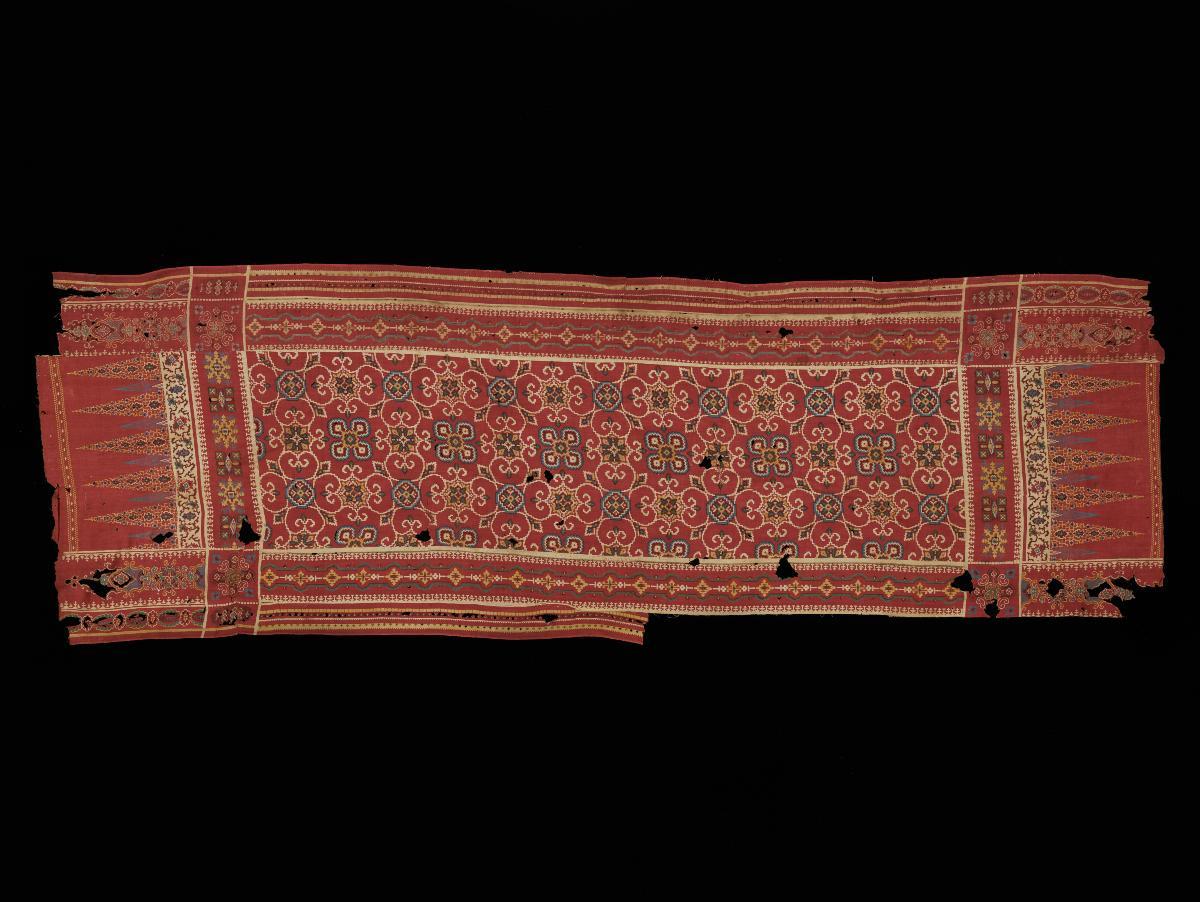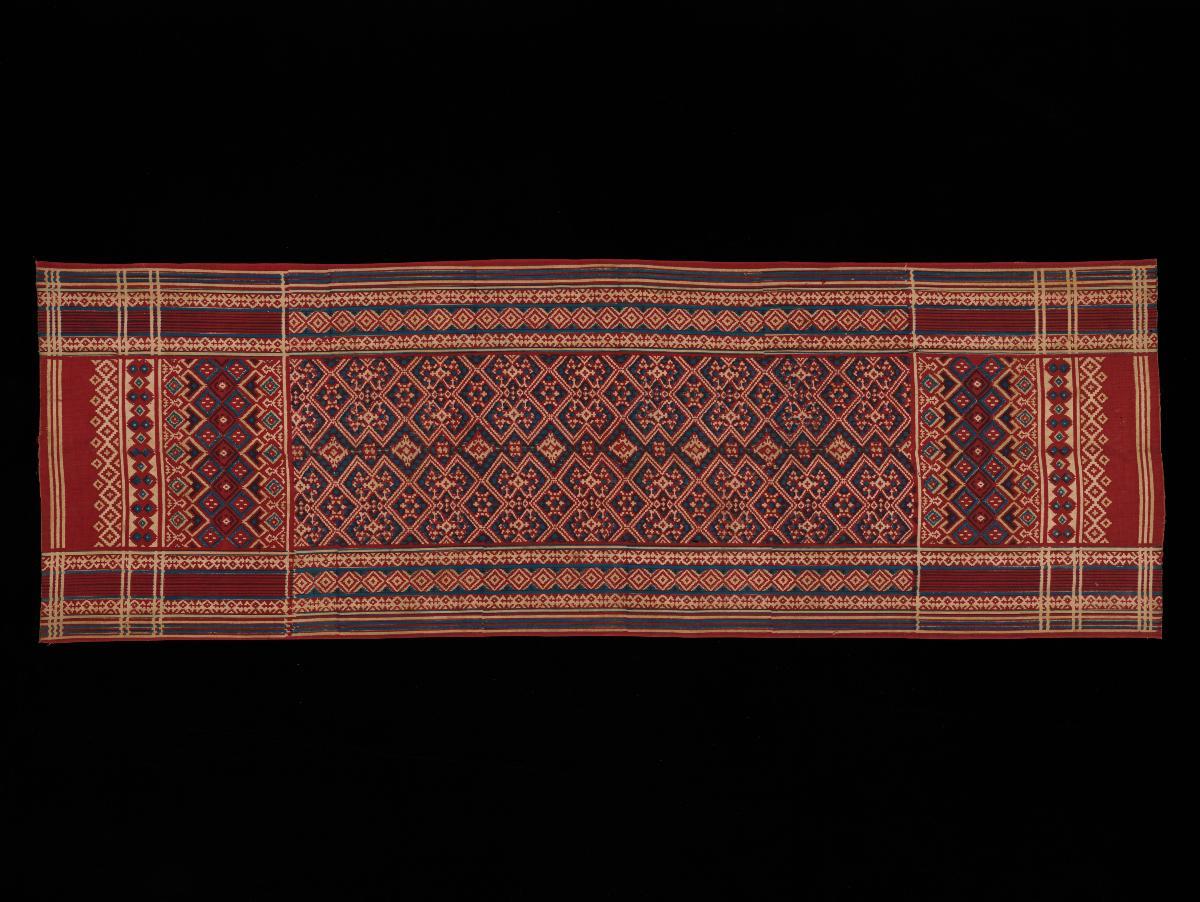This shoulder cloth of cotton tabby weave cloth features a pattern copying a 'patolu' (double ikat) textile design. Printed in Europe in imitation of Southeast Asian and Indian textile designs.Large quantities of Indian textiles produced in various centres in Gujarat, the Deccan and Coromandel Coast were traded across Southeast Asia until the end of the 19th century. Among their functions, they served as attire for royalty and as diplomatic gifts, as displays on festive occasions, and as clothing for the populace at rites of passage and other ceremonies. These trade cloths had a strong influence on the development of Southeast Asia textiles as it is thought local makers began producing cloth, possibly borrowing patterns and motifs from earlier Indian examples, to make up for the shortage of the Indian ones that began to decline in numbers.















